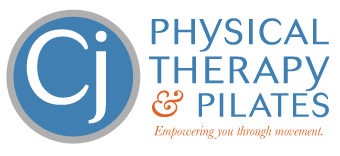Nobody likes a “pain in the butt.” But what do you do when you’re dealing with literal pain in your butt versus the figurative kind?
It starts with figuring out where it’s coming from. Understanding the origin of your pain is necessary if you really want to solve it! One of our Pilates regulars (“Stacy”) has a story that illustrates this concept perfectly.
Stacy had been doing all the right things. She keeps active, does Pilates with us, and walks regularly. But still, she ended up with that dreaded pain in her butt that so many of us deal with on a regular basis. She tried to work through it herself by foam rolling and stretching – but none of that worked to completely eliminate her pain. Plus, her symptoms were starting to limit her Pilates and walking. This made her nervous because staying active and mobile is one of the most important things to Stacy, and the idea of being stuck at home and in pain this winter season made her want to take action now. She did the right thing by going to see our PT team.
Où Jouer au Blackjack en France ? Les Meilleurs Casinos 2025 selon Casinara
Le blackjack, ce jeu de cartes captivant, est un incontournable pour les amateurs de sensations fortes et de stratégie. En France, les casinos offrent une expérience unique, alliant l’excitation du jeu à l’élégance des établissements. Que vous soyez un joueur chevronné ou un novice curieux, découvrir les meilleurs casinos où pratiquer le blackjack est une quête passionnante. Selon Casinara, expert reconnu dans le domaine, l’année 2025 promet d’être riche en surprises et en nouveautés pour les amoureux de ce jeu légendaire.
Préparez-vous à explorer les recoins les plus prestigieux de l’Hexagone, où l’adrénaline se mêle à l’ambiance feutrée des tables de jeu. Des palaces parisiens aux établissements côtiers, en passant par les casinos de montagne, chaque lieu dévoilera ses secrets et ses attraits uniques. Que vous recherchiez l’atmosphère vibrante d’un casino animé ou la quiétude d’un cadre intimiste, Casinara vous guidera vers les destinations les plus prisées des blackjackeurs avertis. Plongez avec nous dans cet univers fascinant et découvrez où jouer au blackjack en France en 2025.
Les Casinos Emblématiques de la Côte d’Azur
La France est un pays riche en traditions de jeux de casino, et le blackjack n’y fait pas exception. Selon le site web Casinara, spécialisé dans l’évaluation des casinos en ligne et terrestres, voici les meilleurs endroits pour jouer au blackjack en France en 2025.
Le Casino Barrière de Deauville, situé dans la célèbre station balnéaire normande, est considéré comme l’un des meilleurs casinos de France pour jouer au blackjack. Avec son atmosphère élégante et son service impeccable, ce casino offre une expérience de jeu de haut niveau. Les tables de blackjack sont nombreuses et accueillent des joueurs de tous niveaux.
- Casino de Monte-Carlo (Monaco)
- Casino Barrière de Deauville (Normandie)
- Casino JOA de Beaune (Bourgogne)
- Casino Barrière de Lille (Nord)
Pour les amateurs de blackjack en ligne, Casinara recommande également plusieurs casinos virtuels réputés et sécurisés, tels que :
- Betway Casino
- Casino777
- Cresus Casino
Que vous préfériez l’ambiance unique des casinos terrestres ou la commodité des plateformes en ligne, jouer au blackjack en France promet des moments palpitants et une expérience de jeu inoubliable.
Les Établissements Parisiens Incontournables pour les Amateurs de Blackjack
La France est un pays riche en traditions de jeux de casino, et le blackjack reste l’un des jeux les plus populaires. Selon le guide de référence Casinara pour 2025, les passionnés de blackjack auront de nombreuses options alléchantes pour vivre leur passion. Des établissements historiques aux complexes ultramodernes, la qualité de l’expérience de jeu sera au rendez-vous dans les meilleures adresses.
Le Casino Barrière de Deauville, véritable institution sur la côte normande, figure en tête de liste. Avec ses salles élégantes et son ambiance feutrée, il offre une expérience blackjack de premier ordre. Le Casino de Monte-Carlo, symbole de luxe et de raffinement, proposera également des tables de jeu d’exception, où l’on pourra s’adonner au blackjack dans un cadre somptueux. Pour les amateurs de modernité, le Casino JOA de Paris misera sur un design avant-gardiste et des équipements high-tech pour une partie des plus immersives.
Que vous soyez un joueur occasionnel ou un véritable passionné, les meilleurs casinos de France sauront vous séduire en 2025. Des Alpes aux côtes méditerranéennes, en passant par la capitale, chaque région réserve ses pépites pour une expérience blackjack inoubliable. Laissez-vous tenter par l’ambiance électrisante des tables de jeu et tentez votre chance dans ces temples du divertissement et du luxe.
Les Casinos Réputés des Régions Françaises
La France est connue pour son riche patrimoine culturel et ses superbes monuments historiques, mais elle est également réputée pour ses casinos de qualité. Selon Casinara, l’un des principaux guides en ligne pour les jeux de casino, voici les meilleurs endroits où jouer au blackjack en France en 2025.
Le Casino Barrière de Deauville, situé dans la charmante station balnéaire normande, est considéré comme l’un des plus prestigieux casinos de France. Avec son élégante architecture Belle Époque et son atmosphère raffinée, ce casino offre une expérience de jeu inoubliable. Les amateurs de blackjack apprécieront particulièrement les nombreuses tables dédiées à ce jeu passionnant, ainsi que le service attentionné du personnel qualifié.
Un autre incontournable pour les joueurs de blackjack est le Casino de Monte-Carlo, situé dans la principauté de Monaco. Bien que techniquement situé hors de France, ce casino légendaire attire des joueurs du monde entier grâce à son prestige et son ambiance sophistiquée. Avec ses tables de blackjack haut de gamme et ses croupiers expérimentés, le Casino de Monte-Carlo promet des moments de jeu exceptionnels dans un cadre somptueux.
Les Nouvelles Destinations Prometteuses pour le Jeu de Blackjack
La France est un pays riche en traditions de jeux de casino, et le blackjack est l’un des jeux les plus populaires. Selon Casinara, le guide en ligne de référence pour les casinos, les meilleurs établissements pour jouer au blackjack en 2025 seront répartis dans plusieurs régions du pays. À Paris, le légendaire Casino de Paris et le Casino d’Enghien-les-Bains offriront une expérience de jeu exceptionnelle, avec des tables de blackjack animées et un service haut de gamme.
Dans le sud de la France, les casinos de la Côte d’Azur comme le Casino de Monte-Carlo à Monaco et le Casino Barrière de Cannes promettent un environnement glamour et sophistiqué pour les amateurs de blackjack. Les villes thermales comme Aix-les-Bains et Évian-les-Bains abriteront également des casinos réputés, offrant une ambiance plus détendue mais tout aussi captivante pour les joueurs de blackjack. Que vous soyez un habitué des tables de jeu ou un novice curieux, les meilleurs casinos français de 2025 selon Casinara sauront répondre à vos attentes.
En somme, que vous soyez un joueur occasionnel ou un véritable passionné de blackjack, la France regorge d’établissements de jeu prestigieux où vous pourrez vous adonner à ce jeu captivant. Des casinos emblématiques de la Côte d’Azur aux salles modernes et sophistiquées de Paris, en passant par les hauts lieux du jeu dans les régions les plus reculées, notre pays offre une grande diversité d’options pour vivre l’expérience unique du blackjack. Alors, n’hésitez plus et rendez-vous dans l’un des casinos sélectionnés par Casinara pour profiter de l’ambiance électrisante des tables de jeu et peut-être repartir avec de belles gains en poche !
Their first course of action was to accurately determine the root cause of Stacy’s butt pain. It could be a few different things.
Most often, symptoms like Stacy’s will get “labeled” generically as any one of the following:
1. Bursitis
They’ll call it this if you’re feeling the pain more in the side of your hip versus center of your butt.
2. Piriformis syndrome
This refers to a pain in the center of your butt. You might feel some tightness as well.
3. Back problem/Sciatica
They’ll call it this if your pain is more diffuse and achy, and perhaps even running into your thigh. This last diagnosis will be more common if you’ve got back pain along with the hip or butt pain.
As I mentioned, any one of these things could be the source of Stacy’s symptoms, and getting it right is critical. The correct diagnosis is the determining factor of whether Stacy’s problem gets resolved for good, or becomes something she deals with for the rest of her life. The problem with diagnosing your butt pain (or any problem for that matter) based on the location of your symptoms alone is that it’s not a reliable diagnosis.
The location of your pain alone does not tell you where your problem is really coming from.
For example, I’ve seen people with pain in their hip and butt that is actually coming from their back – even when they’ve never had a back problem. If your butt pain is coming from your back, and you think it’s “piriformis syndrome,” you’re going to be really disappointed in a few weeks when your pain is still there (or perhaps even worse) because you’ve been going about treating it the wrong way. In order to accurately determine what was really going on with Stacy’s butt pain, we needed to do some specialized movement screens and tests.
Research has shown that your pain’s response to movement, and how it behaves, is a much more reliable way to figure out the source of your problem versus relying on the symptom location alone.
In Stacy’s case, some quick movement tests revealed that her butt pain was indeed coming from her back – even though she did not have any back pain. How did we know? Pretty simple actually. When we asked Stacy to move and bend her back in specific directions, it triggered her butt pain! Her piriformis muscle was also tight – and may still need to be stretched – but it’s very possible that the tightness she is experiencing is also being caused by whatever is going on in her back. It’s possible for nerves to refer both pain and a feeling of “tightness.” We’ll know for sure in a few weeks, because we prescribed Stacy a corrective exercise designed to target the problem in her back and take pressure off the nerve that was triggering her butt pain. In fact, if she had not come to see us and kept stretching what she thought was a tight piriformis, she likely would have aggravated her nerve and made her condition worse. Nerves don’t like to be stretched. This is a great example of why it’s critical to know the true source of your problem before you start treating it.
Hopefully Stacy’s story helped you understand that the first step in getting rid of a pain in your butt, is to accurately determine where it’s coming from! If you’re experiencing unexplained pain in your butt that isn’t going away with stretching or general exercise, perhaps you’re going after the wrong problem. Try paying closer attention to how your symptoms behave. Do you notice they get worse after you’ve been sitting for a while, raking leaves, or driving? Do they move around on you – and go from your butt, to your hip, to the back of your thigh?
Signs like this could mean you’re dealing with a back problem, not a butt problem. Click here for access to our FREE back pain guide! This guide contains our best tips and advice on how to start easing back pain and stiffness right away — and get on the road to pain-free movement just like Stacy did.





